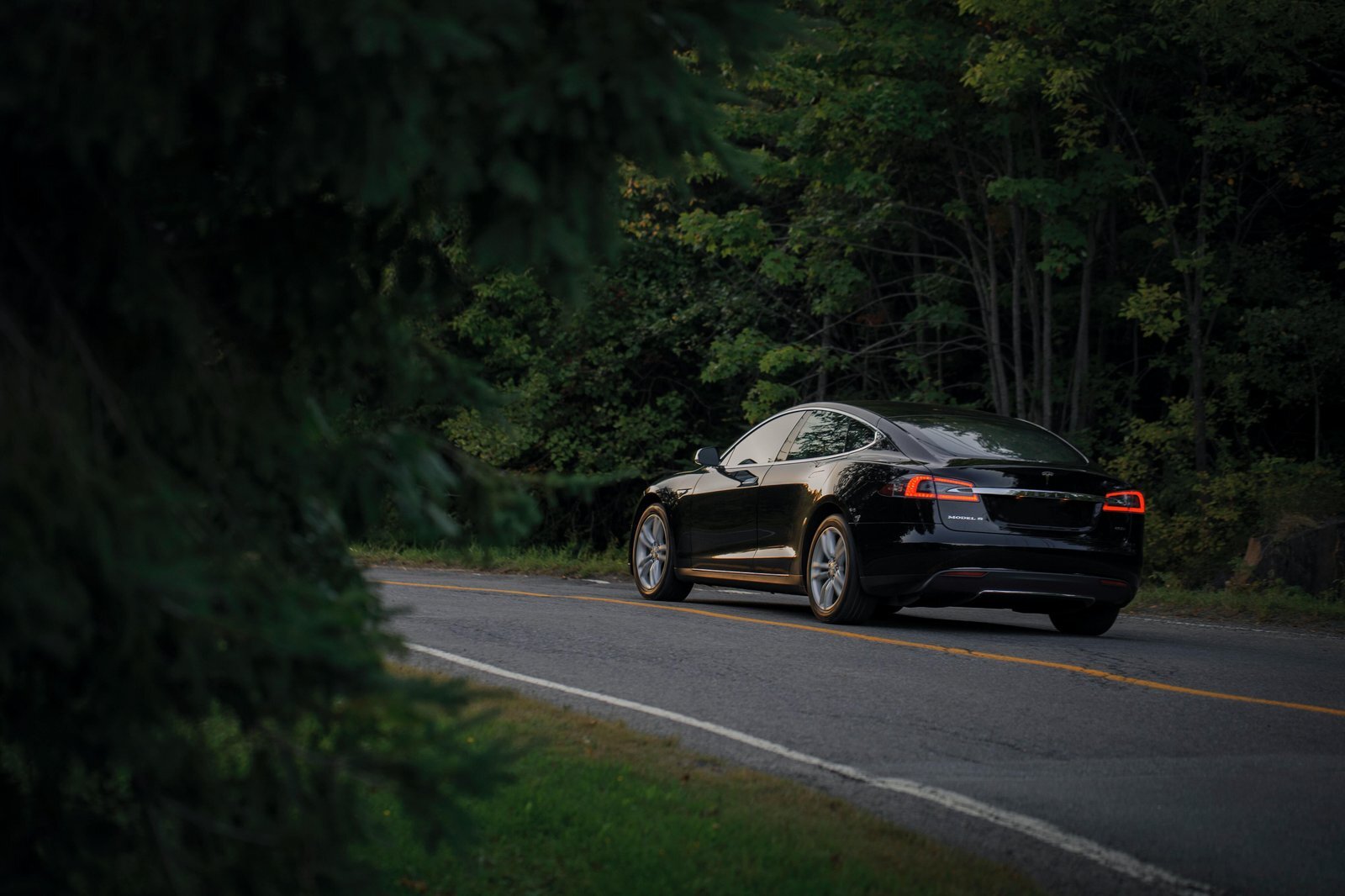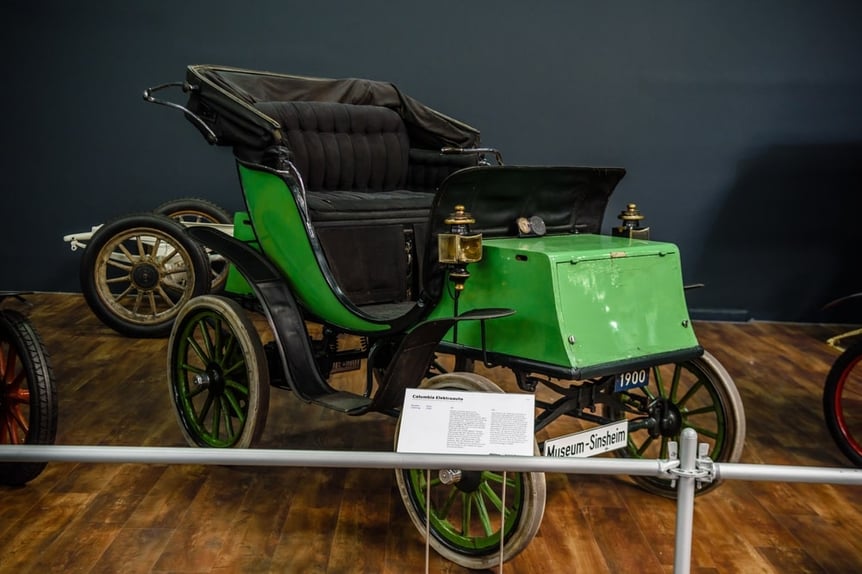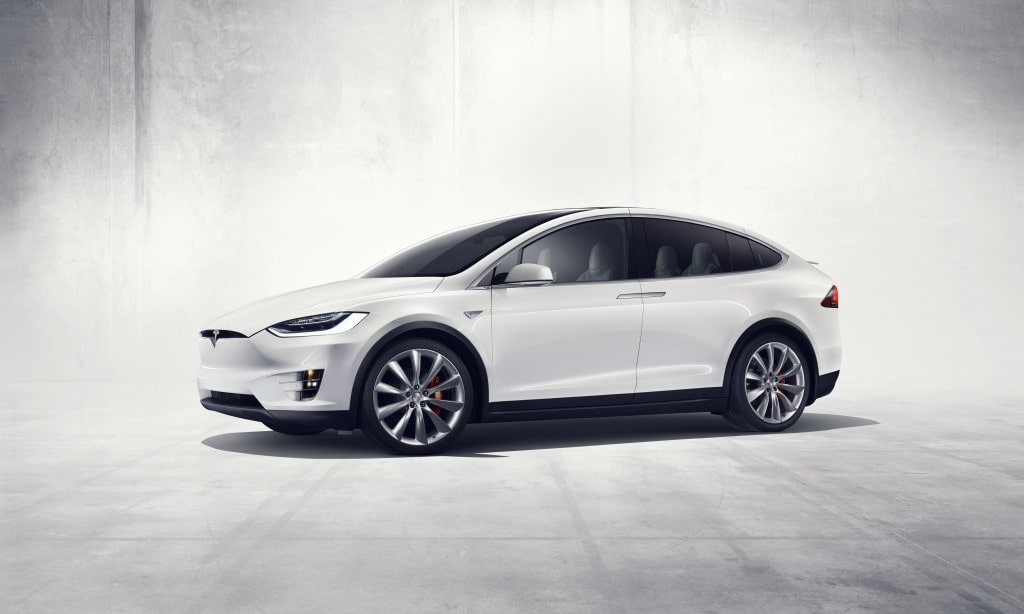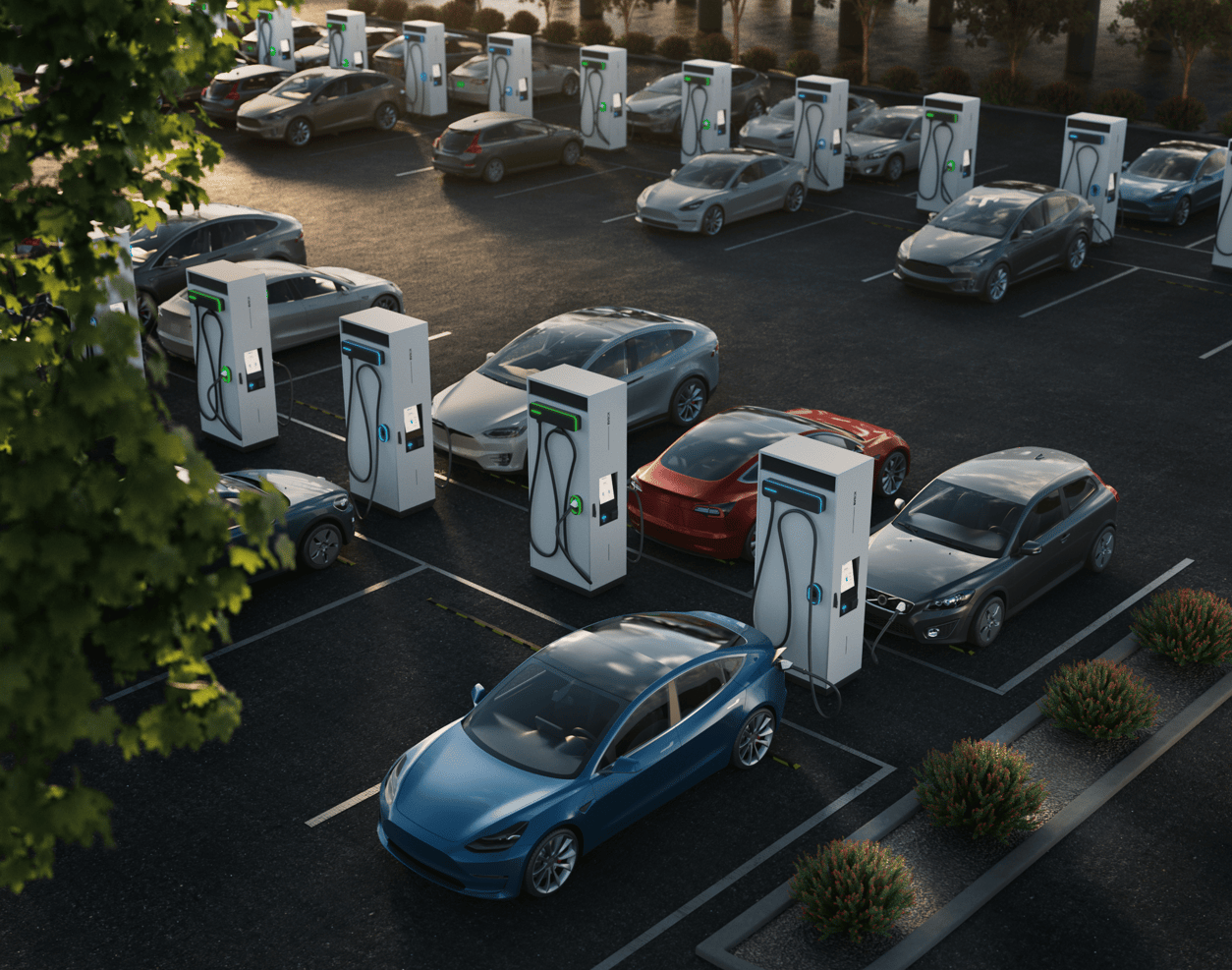
Last updated on April 27, 2023
The history of electric cars can be broken up into six distinct periods:
- 1830-1880: The early pioneers of electric mobility
- 1880-1914: The transition to motorized transport
- 1914-1970: The rise of the internal combustion engine
- 1970-2003: The return of electric vehicles
- 2003-2020: The electric revolution
- 2021-Present day: The tipping point and beyond
The world’s first electric vehicles (EVs) predate gasoline-powered cars, with experimental prototypes emerging in Hungary, the Netherlands, and the UK around the 1830s. The first practical EV is often considered to be American inventor William Morrison’s vehicle from around 1890.
Modern EVs emerged in the late 20th century in response to the 1973 Oil Crisis and growing climate concerns. Starting with the Toyota Prius in 1997, the 2000s marked the re-emergence and development of hybrid vehicles, building to the launch of the first mass-market EV in 2010 with the Nissan Leaf.
Since then, the electric car markets have seen exponential growth as sales exceeded 10 million in 2022 and electric cars now represent one in seven vehicles sold globally. As the world seeks to transition to a sustainable future and governments around the world ban the sale of internal combustion vehicles, the future looks bright for electric mobility.

The surprisingly long history of electric cars
While electric vehicles (EVs) have only recently begun to challenge the internal combustion engine (ICE) for the future of mobility, EVs have been around for over a century. The long history of EVs has been one of many twists and turns.
Many people don’t know that at the turn of the 20th century, there were actually more EVs on the road than gasoline-powered ICE vehicles. This prevalence was challenged, however, when Ford’s moving assembly line made passenger cars more accessible. Ford, empowered by the knowledge that gasoline was more widely available than electricity, built a transport system based on gasoline that would last over a hundred years.
While there were those tinkering with electric mobility in the intermittent decades, it wasn’t until the dawn of the 21st that EVs saw the light again. Fast forward 20 years and EVs have well and truly returned stronger than ever.
The history of EVs is an interesting tale filled with many twists that gave rise to this nascent technology. This article gives an overview of the history of electric vehicles, the current state of electric mobility, and what the future is predicted to hold for the EV revolution.
Electric car history timeline
The history of electric cars can be broken up into five distinct periods: the early pioneers of electric mobility (1830-1880), the transition to motorized transport (1880-1914), the rise of the internal combustion engine (1914-1970), the return of electric vehicles (1970-2003), the electric revolution (2003-2020), and the tipping point (2021 and beyond).
First electric cars (1830-1880)
Throughout the early 1800s, a series of technological breakthroughs in batteries and motors led to the first electric vehicles by engineering and automotive pioneers on both sides of the Atlantic.

When was the first electric car made?
As early as the 1830s, inventors in Hungary, the Netherlands, the UK, and the US were focusing their efforts on combining these technological advances to create a powered motor vehicle. Although it’s a disputed topic, many say the first small-scale electric cars were developed between 1828-1832.
Who made the first electric car?
Depending on how you look at it, the answer could either be Robert Anderson, Anyos Jedlik, Sibrandus Stratingh, Thomas Davenport, Gaston Plante, or William Morrison. Let’s break it down.
It is said that the first electric vehicle was displayed at an industry conference in 1835 by a British inventor by the name of Robert Anderson. Robert Anderson’s vehicle used a disposable battery powered by crude oil to turn the wheels.
Anderson was not alone in his pursuit of electric mobility. Around the same period, Hungarian scientist Ányos Jedlik and Dutch professor Sibrandus Stratingh both invented model electric vehicles. And on the other side of the Atlantic, Thomas Davenport, an American blacksmith-turned-inventor, is also said to have invented integral components of the electric motor which produced the first electric car.
However, all were little more than prototypes of electrified carts—traveling at top speeds of 12 km/h with cumbersome steering, and low range. Then in the 1860s, a French physicist by the name of Gaston Plante invented the first rechargeable lead-acid battery—a huge breakthrough for electric mobility. However, it wasn’t until the late 1880s that these inventions – batteries and electric motors – were put together by electric mobility pioneer William Morrison to create the first “practical” EV.
What was the first electric car?
In the US, the first “practical” electric car was built by William Morrison, a chemist who lived in Des Moines, Iowa. Morrison’s vehicle was a traditional horse-drawn Surrey carriage—popular in 19th Century America—which was converted to fit a battery. Morrison’s electric carriage could carry a maximum of 12 people and had a maximum speed of 32 km/h (20 miles per hour).
The transition to motorized transport (1880-1914)
Around the turn of the 20th century, many people began swapping their horses and carts for motorized vehicles. As a result, the automobile rapidly grew in popularity and the battle for the future of mobility commenced. The options? Steam, gasoline, or electric.
At that time, there was a fairly even split between the three on American roads: roughly 40 percent of vehicles were powered by steam, 38 percent were electric, and only 22 percent by gasoline.
Steam vehicles had been growing in popularity since the 1870s and held a slim majority over the US market at the turn of the century, yet they had major setbacks which ultimately led to their downfall. Steam vehicles required startup times of up to 45 minutes and continuously needed to be refilled with water, limiting their range. In the end, while steam was reliable for powering factories and trains, it proved not practical for personal vehicles.
Who invented the internal combustion engine?

Around the same time as William Morrison was working on his electric-powered carriage, Gottlieb Daimler and Carl Benz simultaneously developed the world's first combustion engine automobiles in 1886 in Germany. However, gasoline-powered cars required the driver to change gears and start the vehicle with a heavy hand crank. They were also far noisier than their steam or electric cousins and emitted pollutants from their exhausts.
In comparison to the two other vehicle types on the market, electric cars proved to be a competitive option. They did not emit any unpleasant pollutants, require changing gears, or have long startup times. This meant that they were easier to drive and much quieter too.
As a result, electric cars quickly became popular with urban residents where electricity was readily available and as more people gained access to electricity, the more popular they became.
When did hybrid cars come out?
This popularity caught the eye of many pioneers of the day: Porsche developed the world’s first hybrid car while Thomas Edison even partnered with friend and former employee Henry Ford to build an affordable EV.
However, this momentum would all come to a slow end, with the creation of Ford’s cost-efficient assembly line and the wider availability of gasoline.

The rise of the internal combustion engine (1914-1970)
EVs took a step back when the mass-produced internal combustion engine (ICE) vehicle was introduced. Along with Ford's Model T, gasoline-powered cars became widely available and affordable.
And after the discovery of oil in Texas, gasoline became cheap and readily available for many, while electricity only remained available in cities. Over the next 30 years, electric vehicles saw little advancement and by the mid-1930s, they had almost completely disappeared from the market.
Cheap, abundant gasoline and continued improvements to the internal combustion engine hampered demand for alternative fuel vehicles and solidified gasoline vehicles’ dominance. As a result, the electric vehicle lay dormant for the better half of a century.
The return of electric vehicles (1970-2003)
Fast forward to the seventies, as oil prices and gasoline shortages reached a new high—peaking with the 1973 Arab Oil Embargo—interest in lowering society's dependence on oil grew.
Automakers, feeling this social shift, started to explore options for alternative fuel vehicles, including electric cars. For instance, General Motors developed a prototype for an urban EV, and even NASA helped raise the profile when their electric Lunar rover became the first manned vehicle on the moon. However, electric vehicles still suffered from several drawbacks compared to gasoline-powered cars, including limited range and slow top speeds – making them a hard sell for consumers.
Yet, the lack of public interest didn't discourage scientists and engineers from trying. Over the next 20 years, automotive companies modified popular models to create electric variations, hoping they could improve the batteries and achieve a range and speed closer to that of gasoline-powered vehicles.
One of the most significant turning points was the introduction of the Toyota Prius. Released in Japan in 1997, the Prius became the world’s first mass-produced hybrid electric vehicle. In 2000, the Prius was released worldwide, and it became an instant success. Since then, rising gasoline prices and growing concern over carbon pollution have helped make the Prius the best-selling hybrid worldwide.
However, the real turning point for battery electric cars would come in 2003, when two entrepreneurs by the names of Martin Eberhard and Marc Tarpenning saw an opportunity.

Going electric (2003-2020)
After seeing the growth of lithium-ion battery capacity in their previous venture, Eberhard and Marc formed Tesla Motors in 2003. Fast forward to 2006, and the Silicon Valley startup announced it would start producing a luxury electric sports car that could go more than 320 km on a single charge.
Tesla’s subsequent success spurred many big automakers to accelerate work on their own electric vehicles. Nissan raised the competition with its launch of the Nissan LEAF in 2010. This all-electric, zero-emission car would become one of the world’s all-time top-selling EVs.
At the same time, new battery technologies entered the market, helping to improve range and cutting EV battery costs. To demonstrate this – and despite a slight rise in battery costs in 2022 due to inflationary pressures and rising raw material costs – the price of lithium-ion batteries has declined by more than 97% since 1991. This, in turn, has helped lower the cost of electric vehicles overall, making them more affordable for consumers.
In the years since almost every mass-market automotive manufacturer has hopped on the electric bandwagon, and many have vowed to stop building internal combustion engine cars altogether.

The tipping point of EV growth (2021 and beyond)
The growth in electric mobility, and especially passenger electric vehicles, has been profound. From whichever metric you measure it—EV sales, EVs on the roads, government EV mandates, EVs as a percentage of all vehicle sales, or simply vehicle manufacturers making electric mobility pledges—it’s undeniable that governments, society, and consumers see electric mobility playing a significant role in the future. Three numbers demonstrate this trend perfectly:
- The amount of EVs on the road has exploded—from negligible in 2010, to approximately 1 million in 2016, and by the end of 2022, there were as many as 26 million electric cars on the world's roads.
- Tesla is the most valuable automotive company on the planet, far ahead of established combustion engine automakers. Co-founder and CEO Elon Musk is, for a large part thanks to Tesla, the richest man on the planet.
- In 2022, EV sales increased by 60 percent in 2022 from the previous year to a new record of 10.6 million. Over 14% of global car sales were electric in 2022.
This growth is not only limited to a few countries either. Around the world, there has been continuous growth in EV sales in all major markets, but nowhere has this acceleration been faster than in Europe. Although China continues to have the largest EV stocks in terms of numbers, many European countries drive EV sales, representing most of the top markets for EV sales.
The top spot on that list goes to Norway, which has almost entirely phased out the sales of ICE vehicles already. Norway holds the title for highest EV penetration, with nearly 80 percent of new cars sold in the country being fully electric. The Nordic country is expected to hit the milestone of 100 percent electric vehicle sales as early as 2025—the first country in the world to do so.
Norway may be first, but they’re not alone: By 2035, it’s expected that all the largest automotive markets will go electric. This rapid growth in electric mobility, according to McKinsey & Company, means that we have already reached the tipping point—or the point beyond which significant and often unstoppable effects or changes take place—in terms of passenger EV adoption in the second half of 2020.
And this growth doesn’t seem to be slowing down anytime soon. As governments, companies, and individuals look towards a sustainable future, many are turning to EVs as an integral step in their decarbonization journey.

The future of electric cars
As you might expect—as an EV charging leader in Europe dedicated to empowering forward-thinking businesses to build a sustainable future—we’re pretty bullish about electric mobility.
While the jump from one to ten million EVs on the road may have come quickly, the next step will be much larger. The International Energy Agency (IEA) predicts that the total fleet of EVs (excluding two/three-wheelers) will grow from almost 30 million in 2022 to about 240 million in 2030, achieving an average annual growth rate of about 30%.
What makes this number even more impressive is that it’s the IEA’s conservative estimate. This scenario, part of their groundbreaking report on global electric mobility uptake, only reflects the existing stated policies, policy ambitions, and targets legislated for or announced by governments around the world.
What’s more, year-on-year, many governments and businesses continue to up their commitments to sustainable transport. The European Union has announced that all new cars sold from 2035 should have zero emissions. In the US, Biden has said he wants to see EVs make up half of all new vehicle fleet electric by 2030. Many other countries around the world, including Canada, the UK, Japan, and multiple states in the US and member states in the EU have made moves to limit ICE sales or ban them altogether.
In line with this, many vehicle manufacturers have stated their intentions to stop ICE sales in certain locations and go electric. For example, GM plans to stop making gasoline passenger cars, vans, and SUVs by 2035. Cadillac, Honda, Jaguar Land Rover, Mercedes, Mini, Volvo, and Volkswagen have all made similar commitments.
Whilst we may not know exactly what the future holds, these trends, together with the ever-growing EV charging infrastructure and strong demand for EVs, point to a bright future for electric mobility.
Related articles

Smart Charging for Solar EV Systems: What is possible today?
There are a variety of smart solutions available, capable of optimizing your solar EV charging system in different...

Can solar EV charging save you money?
Charging your EV using household solar panels can indeed save you money on your utility bills. How much money solar EV...

How to optimize your solar set-up for charging electric cars at home
There are several ways EV drivers can optimize a homegrown solar system to ensure their EV recharging needs are met....